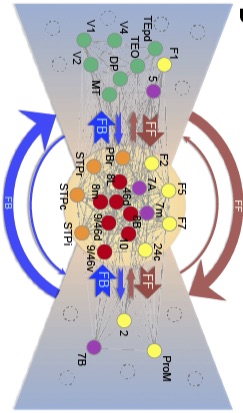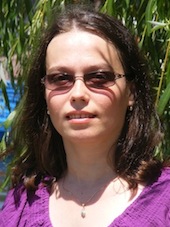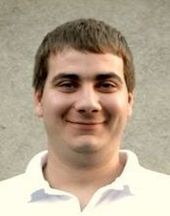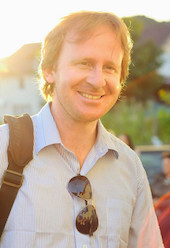
Comparative Investigation of the Cortical Circuits in Mouse, NHP and Human
COFUND-FLAGERA II-CORTICITY
contract number: 14
Sponsored by the Romanian National Authority for Scientific Research CNCS-UEFISCDI and the European Comission
Project Coordinator: Dr. Ken Knoblauch, INSERM, Lyon
PI at the Babes-Bolyai University: Dr. Mária Ercsey-Ravasz
Period: 02 February 2018- 30 November 2020
E-mail: ercsey.ravasz@phys.ubbcluj.ro
Research topic:
The proposal investigates the differences in physiology, anatomy and organization of the cortex in mouse, non-human primate (NHP) and human. This work requires tight collaborations between physiologists, anatomists and theoreticians. Our capacity to successfully integrate across these approaches is strongly supported by the numerous joint publications linking these disciplines in leading international journals by the PI’s of the consortium.
Anatomy: Tract-tracing will be used to build macaque and mouse inter-areal cortical connectomes. This work will generate large data bases on inter-areal connection weights and quantitative measures of laminar distributions as well as atlases of mouse and macaque. The structural basis of hierarchy and local-global integration will be investigated with viral tracers that will be used to map the long distance and local input to the parent neurons of feedforward and feedback connections in visual cortex of mouse and macaque.
Physiology: Hierarchical processing in the human, NHP and mouse brains will be compared using electrophysiological and imaging approaches and together with tract tracing, will inform embedded large-scale dynamic models of inter-areal processing in the cortex. Differences in the inter-areal matrix density lead to widely different core structures across the three species, which will be explored by weighted network structural analysis, thereby revealing the core-periphery organization, which we hypothesize could be relevant to the Global Neuronal Workspace theory of consciousness. We will manipulate consciousness with anesthetics and stimulation techniques in macaque and mouse thereby by exploring Global Neuronal Workspace function via auditory signatures of consciousness in a predictive coding paradigm.
Modeling: Conditional Granger causality analysis on multi-variate time series recordings will help identify functional subnetwork motifs, in order to explore the links between structural and dynamical features in the networks across the three species. Whole-brain computational modeling will address the functional role of the underlying anatomy by studying in silico theoretical measures of integration and segregation allowing topological hierarchical analyses of effective connectivity as opposed to anatomical or functional connectivity. Altogether, the project aims to provide quantitative metrics of differences in brain organization related to changes in brain size and order, and will demonstrably underpin the relevance of investigations in the mouse and macaque for understanding the human brain.
Consortium
Coordinator: INSERM, Lyon, France, PIs: Ken Knoblauch, Henry Kennedy
Babes-Bolyai University,Physics Department, Romania, PI: Maria Ercsey-Ravasz
University Pompeu Fabra, Center of Brain and Cognition, Spain, PI: Gustavo Deco
CEA Saclay, France, PI: Bechir Jarraya
ESI for Neuroscience, Germany, PIs:Pascal fries, Martin Vinck
University of Notre-Dame, Dept. of Physics, PI: Zoltan Toroczkai
Progress:
Phase I (February-December 2018): Budget: 252,000 RON
Task. 1.1 Developing the algorithms for detection of the ”Minimum Spanning Tree” (MST) - Part 1
Task. 1.2 Comparing functional and structural networks using conditional Granger Causality - Part 1
Phase II (January-December 2019): Budget: 279,999 RON
Task 2.1 Comparing network with MST analysis - testing on experimental data
Task 2.2 Developing a novel community detection method that works on weighted, directed and dense networks
Task 2.3 Testing the methods for the calculation of conditional Granger causality on experimental data
Phase III (January-December 2020): Budget: 288,000 RON
Task 3.1 Detecting community structure - Part 2: Structural comparison of the cortical networks of the monkey and mouse obtained from the experimental groups
Task 3.2 Comparing functional and structural networks using conditional Granger causality – Part 3: Comparing different species on the basis of triangular motif analysis; application of methodology on experimental datasets
ISI Journal articles published during the project:
1. Ferenc Molnár, Ana R. Ribeiro Gomes, Szabolcs Horvát, Mária Ercsey-Ravasz, Kenneth Knoblauch, Henry Kennedy, Z. Toroczkai, High predictability of cortico-cortical connections in the mammalian brain, va fi submis curând (preprint bioRxiv 10.1101/2020.12.03.410803, https://biorxiv.org/cgi/content/short/2020.12.03.410803v1)
2. Miriam Wandres, Simone Pfarr, Botond Molnár, Ursula Schöllkopf, Maria Ercsey-Ravasz, Wolfgang H. Sommer and Christoph Körber, Alcohol and sweet reward are encoded by distinct meta-ensembles (under review in Neuropharmacology)
3. Zsolt I. Lazar, Antal Jakovac, Peter Hantz, Analyzing the motion of symmetric tops without recurring to analytical mechanics, Journal: Frontiers in Physics, section Mathematical and Statistical Physics (accepted 2020)
4. Bulcsú Sándor , Schneider Bence , Zsolt I. Lázár and Mária Ercsey-Ravasz, A Novel Measure Inspired by Lyapunov Exponents for the Characterization of Dynamics in State-Transition Networks, Entropy, 23(1), 103, https://doi.org/10.3390/e23010103
5. István Tóth, Zsolt I. Lázár, Levente Varga, Ferenc Járai-Szabó, István Papp, Răzvan V. Florian, Mária Ercsey-Ravasz, Mitigating ageing bias in article level metrics using citation network analysis, Journal of Informetrics, 15, 2021, 101105, doi: 10.1016/j.joi.2020.101105
6. Lilla Ravasz, Katalin Adrienna Kékesi, Dániel Mittli, Mihail Ivilinov Todorov, Zsolt Borhegyi, Mária Ercsey-Ravasz, Botond Tyukodi, Jinhui Wang, Tamás Bártfai, James Eberwine and Gábor Juhász, Cell Surface Protein mRNAs Show Differential Transcription in Pyramidal and Fast-Spiking Cells as Revealed by Single-Cell Sequencing, Cerebral Cortex, 2020, pp 1:15, advanced online publication July 27, doi: 10.1093/cercor/bhaa195
7. P. Hantz, Z.I. Lázár, Procession Intuitively Explained, Frontiers in Physics, vol. 7, art. 5, 2019, doi: 10.3389/fphy.2019.00005
8. B Molnár, F. Molnár, M Varga, Z Toroczkai, M Ercsey-Ravasz, A continuous-time max-SAT solver with high analog performance, Nature Communications 9, 2864, 2018, doi:10.1038/s41467-018-07327-2
9. Z.I. Lázár, D.J. Dijk, A.A. Lázár, Infraslow oscillations in human sleep spindle activity, Journal of Neuroscience Methods, 316, 22-24, 2018, doi: 101016/j.jneumeth.2018.12.002
Conferences, Workshops, Invited seminars:
Bulcsú Sándor , Schneider Bence , Zsolt I. Lázár and Mária Ercsey-Ravasz, Time-series analysis with state-transition networks, 45th Conferences of the Middle European Cooperation in Statistical Physics, 14-16 September, poster, 202
Levente Varga, Botond Molnár, Vlad V. Moca, Laura Perez-Cervera , Antonio Díaz-Parra, David Moratal, Santiago Canals, Raul C. Muresan, and Mária Ercsey-Ravasz. Characterizing resting state brain networks based on probability distributions of network properties, 45th Conferences of the Middle European Cooperation in Statistical Physics (online), 14-16 September, poster, 2020
Botond Molnár, Ildikó-Beáta Márton, Szabolcs Horvát, Mária Ercsey-Ravasz, Community Detection in Weighted Directed Networks using Voronoi Partitioning, 45th Conferences of the Middle European Cooperation in Statistical Physics (onine), 14-16 September,poster, 2020
Botond Molnár, Ildikó-Beáta Márton, Szabolcs Horvát, Mária Ercsey-Ravasz, Community Detection in Weighted Directed Networks using Voronoi Partitioning, NetSci 2020 International Conference, September 17-25, Rome (online), poster
M. Ercsey-Ravasz, ”The Chaos within Sudoku”, invited talk at International Webinar on Sudoku: Fun and Serious Mathematics, organizat de Maharaja Sayarijao University of Baroda, India si UT Eindhoven, The Netherlands, 3 iulie 2020
L. Varga, B. Molnár, V.V. Moca, L. Perez-Cervera, A. Diaz-Parra, D. Moratal, S. Canals, R.C. Muresan, M. Ercsey-Ravasz, Stable probability distribution of brain network properties in resting state fMRI, oral presentation at the Conference on Complex Systems, NTU, Singapore, 2019, October
M. Ercsey-Ravasz, Modelling the inter-areal cortical network based on a distance rule: from the mouse to the macaque, invited talk at the CBG Postdoc Retreat of the Max Planck Institute, Dresden, 2019 June
S. Pfarr, M. Wandres, B. Molnár, M Ercsey-Ravasz, C. Korber, W. Sommer, cFos based network analysis reveals profound differences in the representation of memories for alcohol and sweet reward, poster at European Behavioural Pharmacology Society Biennial Meeting 2019, Braga, Portugal, 2019, August
M. Ercsey-Ravasz, Analyzing anatomical and functional brain networks, invited talk at a Workshop at Eotvos Lorand University for Bilateral Collaboration, ELTE, Budapest, Hungary, 2019 September
Z.I. Lazar, Exploring EEG rhythms: applications in neurodegeneration and circadian research, oral presentation at a Workshop at Eotvos Lorand University for Bilateral Collaboration, ELTE, Budapest, Hungary, 2019 September
Z.I. Lazar, Infraslow oscillations in the human sleep EEG: Effects of age, sex, sleep history and circadian phase, oral presentation at the Symposium on Sleep, Aging and Brain Health, Sleep and Brain Research Unit, University of East Anglia, 2019, May
Maria Ercsey-Ravasz, "The new era of network science", invited talk at the "Jozsef Attila Szabadegyetem" (Attila Jozsef Free University), Budapest, Hungary, February, 2018
Maria Ercsey-Ravasz, Levente Varga visited one of the partners, Zoltan Toroczkai at the University of Notre Dame in the USA, in the period of July 1-15, 2018.
Consortium meeting in Frankfurt between all partners. From the BBU group Maria Ercsey-Ravasz and Levente Varga have participated. July 24-25, 2018.
A. Lazar, Zs. I. Lazar, D.-J. Dijk, Sex differences in the circadian and sleep dependent regulation of sleep spindles in humans, 24th Congress of the European Sleep Research Society, 25 – 28 September 2018, Basel, Switzerland
Zs. I. Lazar, Symposium on Sleep, Aging and Brain Health & Inauguration of the Sleep and Brain Research Unit, University of East Anglia, May 1, 2019
Other dissemination activities:
Presentation titled "Alcohol and sweet reward are encoded by distinct meta-ensembles" at the Hungarian Physics Department seminar, UBB Cluj-Napoca, 6 November, 2020
Presentation titled "Agyi halozatok modellezese" (Modelling of Brain Networks) at the Universit Year Convocation 2020/21 of the Hungarian Physics Department, UBB Cluj-Napoca, September 28, 2020
M. Ercsey-Ravasz, Interview at Radio Cluj, 2019 May. Project director was invited to talk about her research and results
M. Ercsey-Ravasz, Interview in the FIRKA magazine, 2019, July. FIRKA is a scientific magazine written for high-school students. The project director was talking about her career, main research areas and important achievements
Other publications:
- M. Ercsey-Ravasz, "Agyi halozaok modellezese egy tavolsagszabaly alapjan" ("Modeling structural brain networks based on a distance rule"), FIRKA, invited paper 2017-2018 vol. 4 (emt.ro)
Previous publications relevant to the project:
- Răzvan Gămănuţ, Henry Kennedy, Zoltán Toroczkai, Mária Ercsey-Ravasz, David C Van Essen, Kenneth Knoblauch, Andreas Burkhalter, The Mouse Cortical Connectome, Characterized by an Ultra-Dense Cortical Graph, Maintains Specificity by Distinct Connectivity Profiles, Neuron 97, 698-715. e10 , 2018.
- Sz. Horvát†, Răzvan Gămănuț†, Mária Ercsey-Ravasz†, Loïc Magrou, Bianca Gămănuț, David C. Van Essen, Andreas Burkhalter, Kenneth Knoblauch, Zoltán Toroczkai, Henry Kennedy,”Spatial embedding and wiring cost constrain the functional layout of cortical networks in rodents and primates”, PLoS Biol., vol. 14, e1002512, 2016. († indicates equal contribution).
- M. Ercsey-Ravasz, N.T. Markov, C. Lamy, D.C. Van Essen, K. Knoblauch, Z. Toroczkai, H. Kennedy, “A predictive network model of cerebral cortical connectivity based on a distance rule.”, Neuron vol. 80, pp. 184-197, 2013
- N.T. Markov, M. Ercsey-Ravasz, D.C. Van Essen, K. Knoblauch, Z. Toroczkai, H. Kennedy, "Cortical High-density Counter-stream Architectures", Science, 342, 1238406, 2013 doi:10.1126/science.1238406
BBU Research group

Dr. Mária Ercsey-Ravasz
Project director
After obtaining Ph.D. in Physics and Information Technology, Dr. Ercsey-Ravasz have spent 3 years as a postdoctoral researcher at the University of Notre Dame, IN, USA. She returned to Romania to the Babes-Bolyai University with a Marie Curie Fellowship in 2012.
homepage


